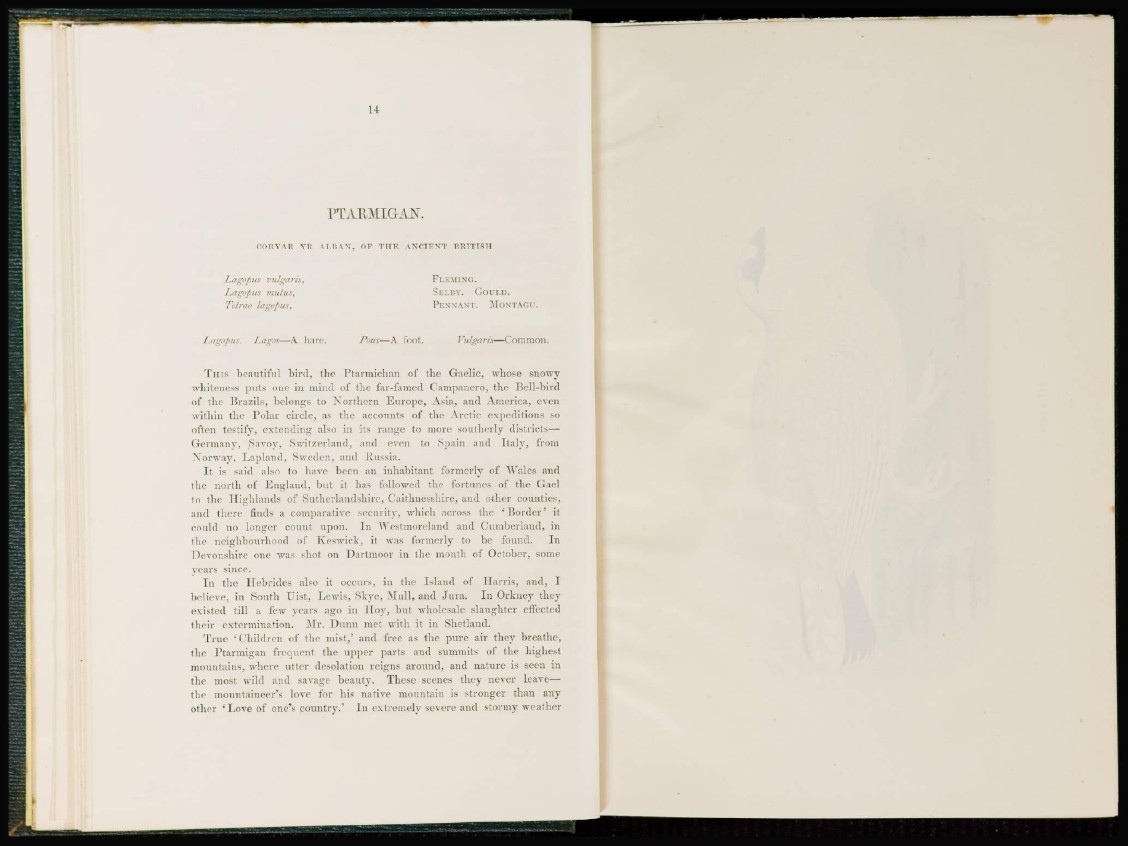
PTARMIGAN.
OORYAR YK VLBAN, OF THE ANCIENT BUTTI8B
Lagopus vulgaris,
Lagopus main*.
Tetrao lagopus.
FLBUTNG.
SELBY. GOULD.
PENNANT. MONTAGU.
Lagopus. Lagos—A hare. Pons—A foot. J rulgaris—Common.
T H I S beautiful bird, the Ptarmichan of the Gaelic, whose snowy
whiteness puts one in mind of the far-famed Campanero, the Bell-bird
of the Brazils, belongs to N o r t h e r n E u r o p e , Asia, and America, even
within the Polar circle, as the accounts of the Arctic expeditions so
often testify, extending also in its range to more southerly districts—
Germany, Savoy, Switzerland, and even to Spain and Italy, from
Norway. Lapland, Sweden, and Russia.
I t is said also to have been an inhabitant formerly of Wales and
t h e north of England, but it has followed the fortunes of the Gael
to the Highlands of S u t h e r l a n d s h i r e , Caithnesshi re, a n d other counties,
and there finds a comparative security, which across the ' B o r d e r * it
could no longer count upon. In Westmoreland and Cumberland, in
the neighbourhood of Keswick, it was formerly to be found, In
Devonshire one was shol on Dartmoor in the month of October, some
years since.
I n the Hebrides also it occurs, in the Island of Harris, and, I
believe, in South Uist, Lewis, S k y e , M u l l , and J u r a . In O r k n e y they
e x i s t e d till a few years ago in I I o v , but wholesale slaughter effected
their extermination, Mr. D u n n met with it in Shetland.
T r u e ' C h i l d r e n of the mist,1 and free as the pure air they breathe,
t h e Ptarmigan frequent the upper parts and summits of the highest
mountains, where utter desolation reigns around, and n a t u r e is seen in
t h e most wild and savage beauty. These scenes they never leave—
t h e mountaineer's love for his native mountain is stronger than any
o t h e r ' L o v e of one's country." In extremely severe and stormy weather